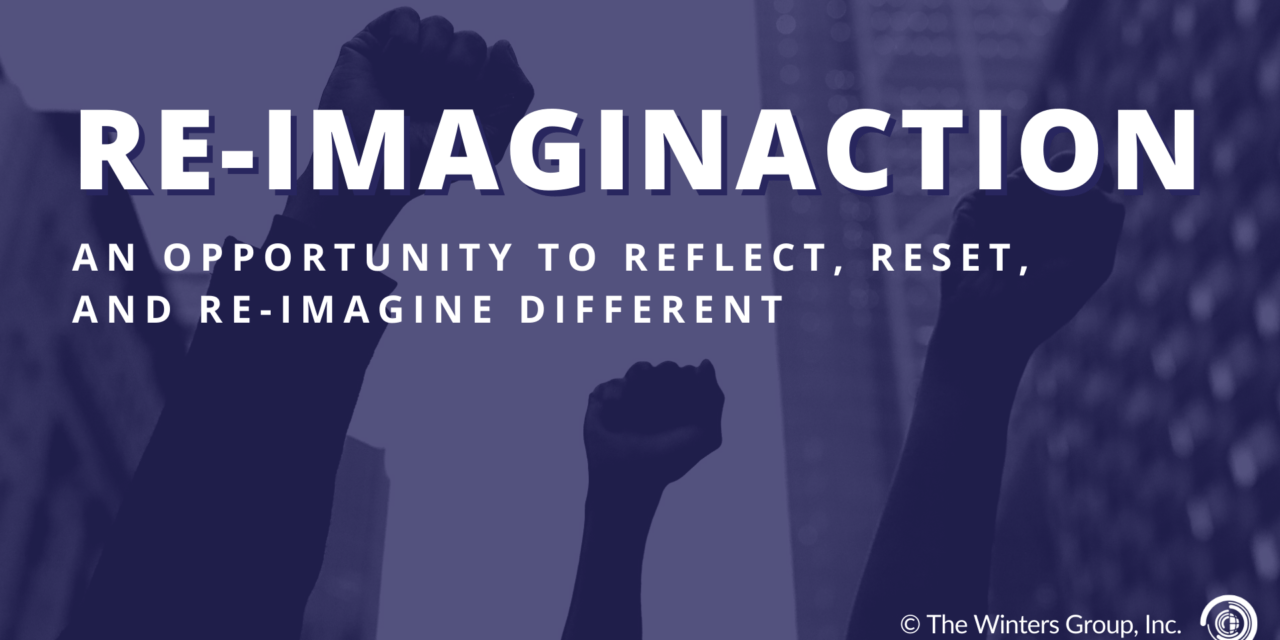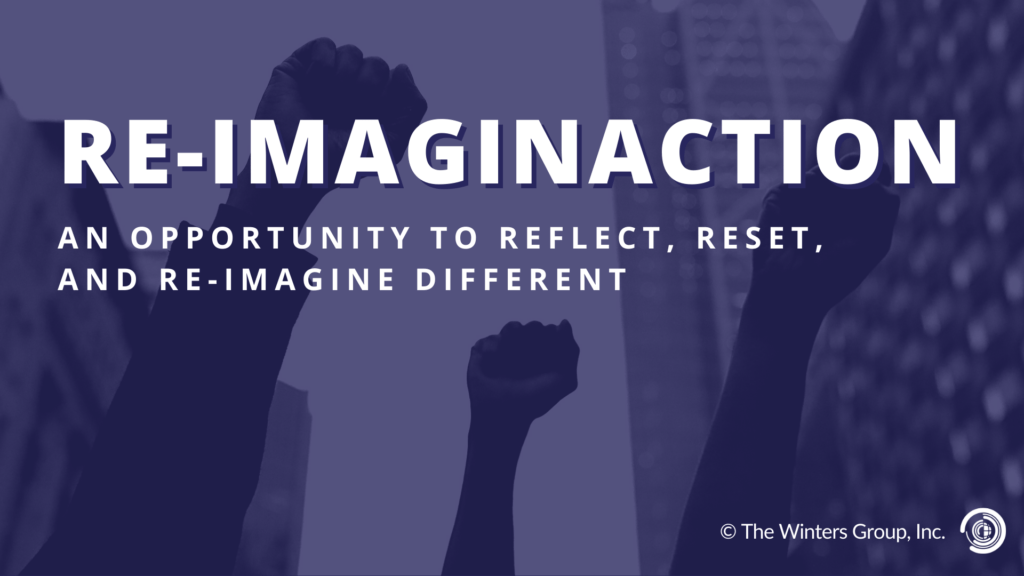As part of our focus on operationalizing justice, The Winters Group hosted our first in a series of four Re-Imaginaction Virtual Learning Labs yesterday. You can listen to the session here. With over 100 participants from China, France, Abu Dhabi and all regions of the U.S., we engaged in a conversation about re-imagining and acting with a justice–centered lens. Participants represented industries and roles including government, not-for-profit, corporate, education, consulting and more. Just over half of the attendees were engaged in DEI work full time. In answer to our probe of why they attended this lab, most said that they were curious to learn more from others on how to move from performative DEI actions to those that would result in sustained change.
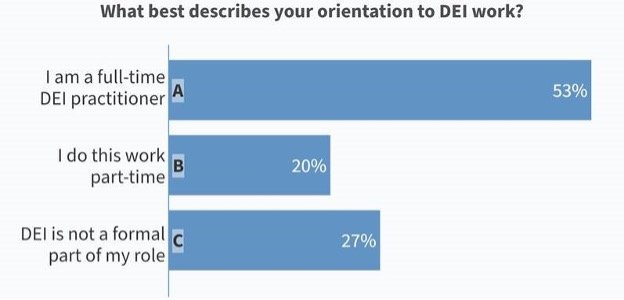
I shared with attendees the evolution of DEI depicted below from compliance to programmatic solutions, such as councils and affinity groups. The human capital or business case rationale became popular in the late 90s, focusing on diversity as a competitive advantage enhancing business outcomes with more innovation. None of these approaches have yielded the desired outcomes. After decades of DEI, we still lament that historically marginalized groups continue to be underrepresented, undervalued and inequitably treated. The “disrupter” approach is gaining traction in attempt to move from performative actions to those that will actually change unjust systems and repair the centuries of harm that they have caused.
After decades of DEI, we still lament that marginalized groups continue to be underrepresented, undervalued & inequitably treated. Click To Tweet The 'disrupter' approach is gaining traction to move away from performative actions to those that will actually change and repair unjust systems. Click To Tweet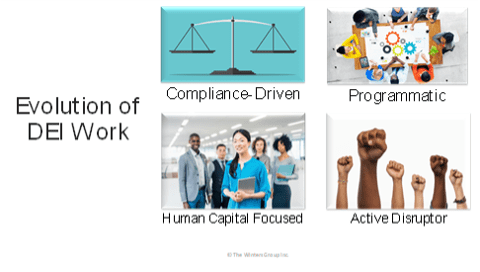
What does centering justice mean?
We define this as an orientation and consciousness that allows for recorrecting systems, repairing harm and implementing deliberate systems and practices that produce equity and shift power. Justice work is very different from traditional DEI work; I believe that many who signed up for anti-racism and social justice work in their organizations did not understand this distinction. Now, we are seeing resistance. Attendees created this word cloud to share their definitions of justice.
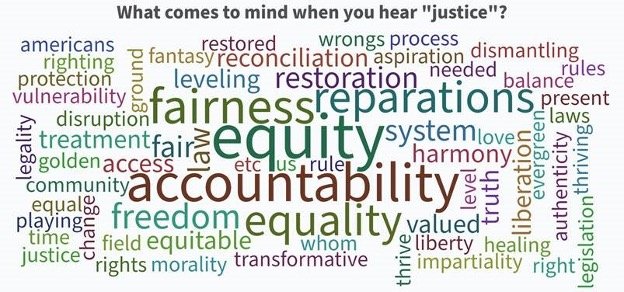
When we asked to what extent is your organization ready for a justice-centered approach, only 5% said “we are doing it” and 45% answered “not even close.” Encouragingly, half responded “we are getting there/working on it.”
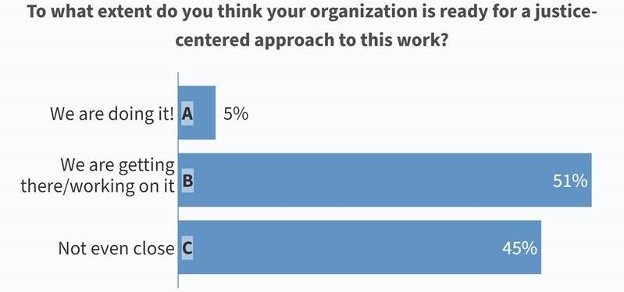
In a breakout session, we asked attendees to discuss three questions. These are the key themes.
What are you noticing related to this work?
- Companies are having a knee-jerk reaction but not wanting to actually do the work.
- The actions are performative and have no impact.
- People look at justice as what they see on TV and fail to see that it benefits all, not just a specific group of people.
- Black leaders feel pressured to center white comfort. “I’ve been baffled by the internalized oppression.”
- BIPOC are still afraid to speak up, fearing it will impact their career trajectory.
- Too many see this as a political issue rather than justice.
Where do you see organizational shifts towards justice?
- We are not there yet but making a tremendous amount of ground. Its slow and painful but we are in it for the long haul.
- Even engaging in anti-racist training is a tremendous shift.
Where are you seeing resistance?
- There is a lot of uninformed enthusiasm — “diversity, yay!” but when it comes down to actually doing the work and having these conversations, there’s a lack of enthusiasm.
- There is resistance to using anti-racist language; still need to sanitize to make people feel comfortable.
- Middle Management continue to be resistors.
One year after the renewed interest in anti-racism work sparked by George Floyd’s murder — and so many others who were murdered during a short time frame in the Spring of 2020 — we are at an important inflection point. The global protests put a spotlight on just how deep racism is and how little progress we have really made to dismantle it. Now, the “rubber meets the road.” It is decision time. Organizations developed statements of solidarity and declared they would do better. I think we may be backpedaling because the work is hard, and also because it disrupts a status quo that works well for the dominant group (white people). The resistance is real.
Are we going to do justice work in earnest with fidelity and integrity? Are we going to acknowledge intergenerational harm? Our complicity? Are we going to take collective accountability? Are we going to step up and work through the resistance? The conflict? It takes courage. It takes real leadership. It requires collective accountability.
What is it going to be — back to business as usual or at last really dismantle oppressive systems?
Are we going to do justice work in earnest w/fidelity & integrity? Are we going to acknowledge intergenerational harm? Our complicity? Are we going to take collective accountability? And work through resistance? Click To Tweet What is it going to be — back to business as usual or at last really dismantle oppressive systems? Click To Tweet
